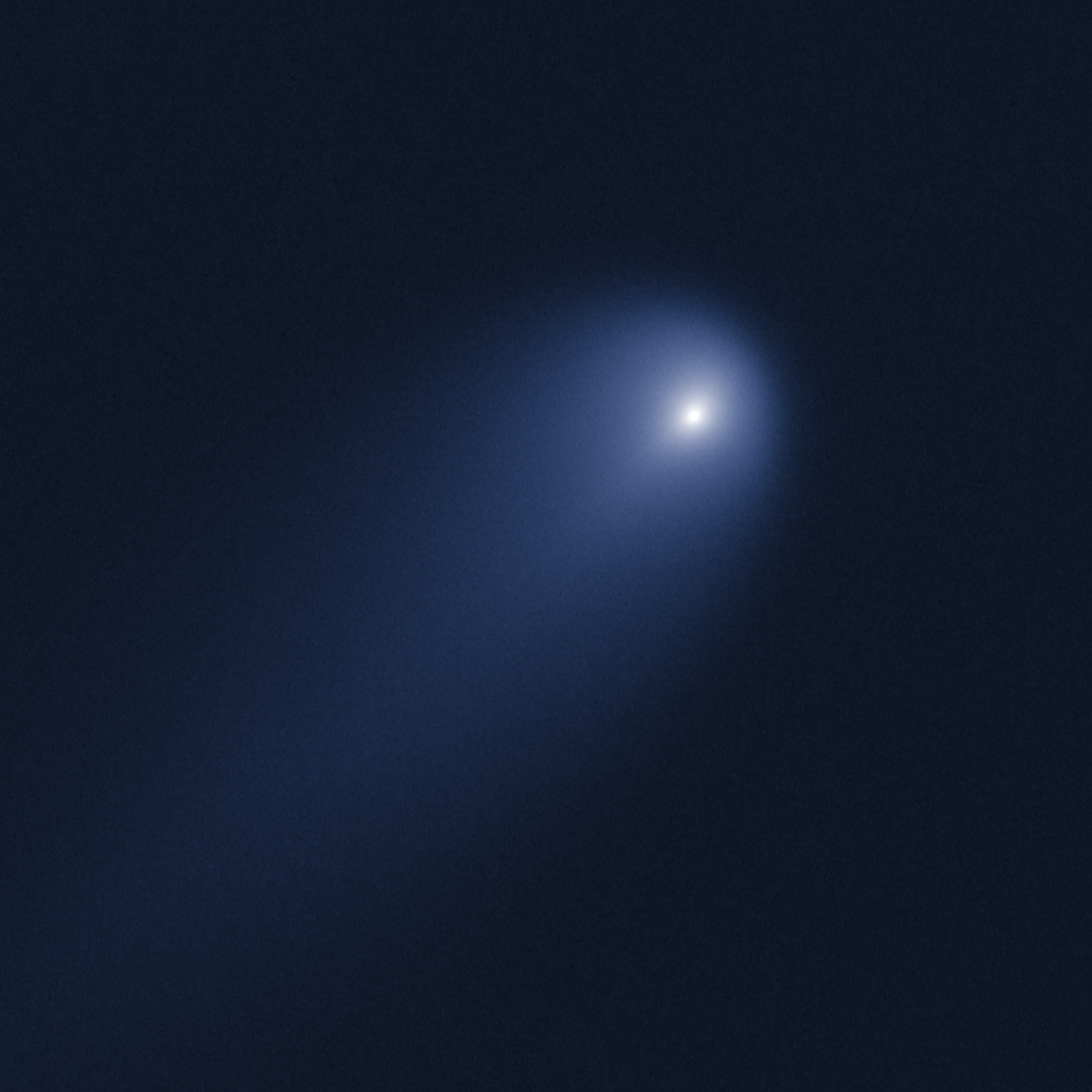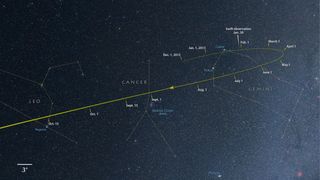
As astronomers track a possible "comet of the century" in the coming months, they might need to recall an old adage: "Those who cannot remember the past are condemned to repeat it."
When it was first sighted last September by two Russian amateur astronomers, Comet ISON was located some 620 million miles (1 billion kilometers) from the sun. At the time, it was hovering at around 18th magnitude on the brightness scale — about 100,000 times fainter than the faintest star visible to the unaided eye.
While that is extremely faint, ISON was still glowing rather brightly for a comet so far from the sun. When it was determined that the comet would eventually "graze" the sun, coming within 730,000 miles (1.2 million kilometers) of the solar surface on Nov. 28, 2013, the implication was that ISON would become superbright — possibly matching the brilliance of a full moon. [See Photos of Comet ISON in the Night Sky]
Remember Kohoutek?
If you're of a certain age, this story might have a familiar ring. Indeed, exactly 40 years ago, a comet by the name of Kohoutek was also discovered at a tremendously large distance from the sun, en route to a close solar encounter in late December 1973.
Like ISON, Kohoutek was expected to dazzle — perhaps more than 100 times brighter than Venus. It, too, was dubbed "the comet of the century," but in the end, Kohoutek turned out to be much dimmer and put on a rather disappointing show.
Members of the media referred to Comet Kohoutek as “Ko-hoax-tek,” and the recriminations were rather nasty for astronomers, who had promised a holiday light show in the sky.
Get the Space.com Newsletter
Breaking space news, the latest updates on rocket launches, skywatching events and more!
When Johnny Carson, who liked to think of himself as an amateur astronomer, welcomed astronomer Carl Sagan as a guest on the "Tonight Show," the comedian balked at Kohoutek’s poor showing. "Comet of the century?" quipped Carson, "This thing wouldn't have made comet of the week!"

Going nowhere
Although Comet ISON won't begin its rendezvous with the sun for another six months, astronomers say the comet will put on a stupendous display. But as was the case with Kohoutek, there’s a possibility that Comet ISON may not live up to its heralded expectations.
Comet ISON has apparently stopped brightening since the beginning of this year. After increasing more than sixfold in apparent brightness since its discovery, the comet has remained at 16th magnitude since Jan. 2; its brightening trend has, for all intents and purposes, flatlined.
Using CCD camera imagery, astronomer Faustino Garcia has developed the "observadores-cometas" light curve here for a photometric aperture of 10 inches.
The solid red line depicts the original brightening forecast for the comet; the dates at the bottom of the graph give the day, followed by the month and then the year — so the final date"19/05/13” corresponds to May 19, 2013.
Celestial deception
Comet ISON is apparently a "new" comet — a comet making its first trip around the sun — that has originated from the Oort cloud, a realm of icy objects that extends perhaps one to two light-years from the sun, where billions of comets may reside.
Such a comet has never been exposed to the light and heat of the sun, and may possess a thin "frosting" of volatile material that vaporizes at a great distance from the sun and initially gives a false impression that it is dynamically large and active. After the frosting evaporates, the comet stops brightening. This is what may have happened with ISON.
Astronomers probably won’t know what will happen to ISON until the comet gets close enough to the sun for any frozen water locked within its 3-mile-wide (4.8 km) nucleus to begin to sublimate (go from a solid to a gaseous state).
This process could get ISON back on a brightening trend. ISON will need to come within 280 million to 230 million miles (450 million to 370 million km) of the sun for this to happen, but it won’t arrive within this distance range until sometime between July 8 and Aug. 12.
Until then, consider Comet ISON to be in a "holding pattern." It still has a chance of becoming a celestial showpiece by later this year, but it could just as easily end up following the ill-fated Kohoutek as a celestial flop.
Joe Rao serves as an instructor and guest lecturer at New York's Hayden Planetarium. He writes about astronomy for "Natural History" magazine, the "Farmer's Almanac" and other publications, and he is also an on-camera meteorologist for News 12 Westchester, New York. Follow us on Twitter, Facebook and Google+. Original article on SPACE.com.
Join our Space Forums to keep talking space on the latest missions, night sky and more! And if you have a news tip, correction or comment, let us know at: community@space.com.

Joe Rao is Space.com's skywatching columnist, as well as a veteran meteorologist and eclipse chaser who also serves as an instructor and guest lecturer at New York's Hayden Planetarium. He writes about astronomy for Natural History magazine, Sky & Telescope and other publications. Joe is an 8-time Emmy-nominated meteorologist who served the Putnam Valley region of New York for over 21 years. You can find him on Twitter and YouTube tracking lunar and solar eclipses, meteor showers and more. To find out Joe's latest project, visit him on Twitter.











